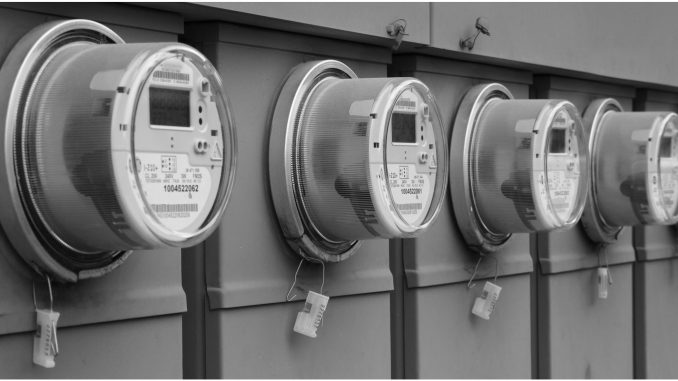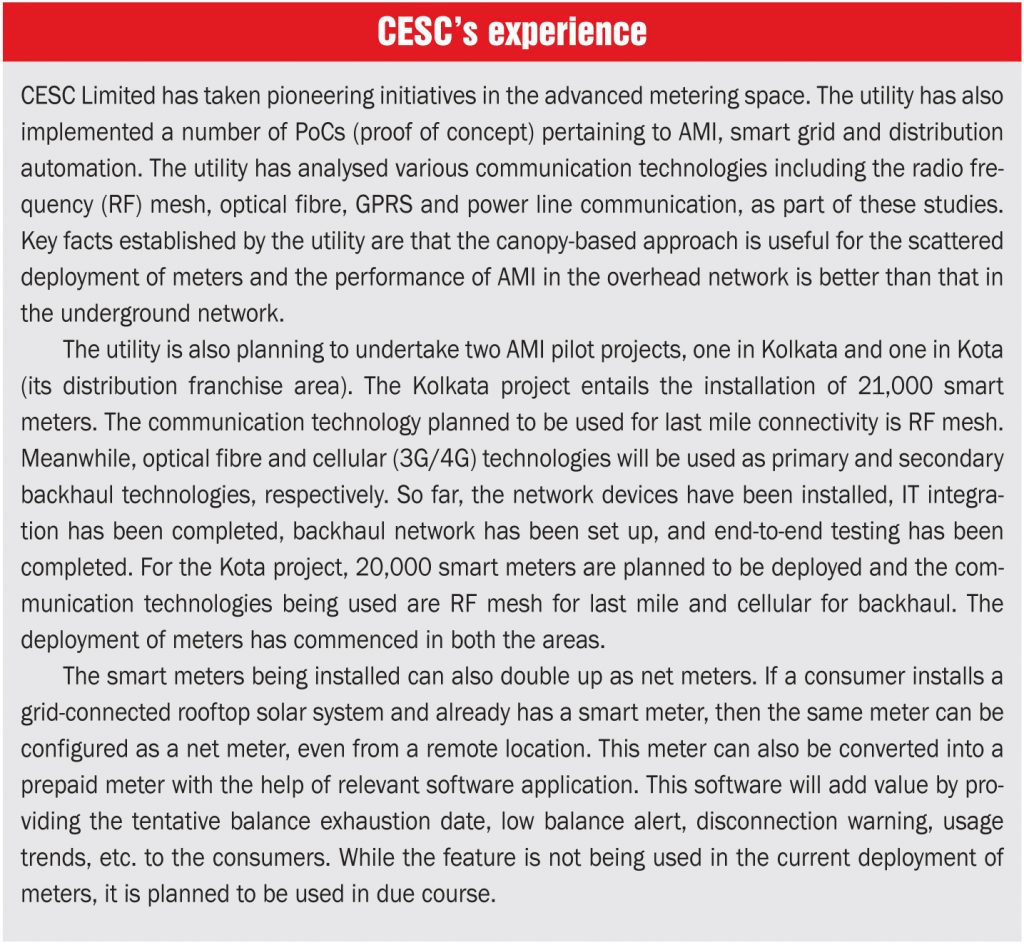
Metering technology has evolved significantly over the past few years, from manual meter reading to automated meter reading (AMR) and further to advanced metering infrastructure (AMI). AMR and AMI are the building blocks of smart meters and smart grids. Therefore, the adoption of these technologies is growing with the increase in smart grid implementation. Utilities are using AMR and AMI for varied applications such as outage management and load balancing.
In recent years, the installation of smart meters has received a push from the government through various policies and programmes. In all 10 smart grid pilot projects shortlisted by the Ministry of Power in 2012, AMI is an important feature. Smart metering is a key component of several government programmes in the sector. For instance, the Integrated Power Development Scheme envisages the installation of smart meters with supervisory control and data acquisition systems in all urban areas. Further, the tariff policy, amended in January 2016, aims to facilitate the installation of smart meters to enable time-of-day (ToD) metering, theft reduction and net metering. The revised policy and the Ujwal Discom Assurance Yojana mandate the deployment of smart meters for all consumers with a consumption of more than 500 units per month by December 31, 2017, and for those with a consumption of over 200 units per month by December 31, 2019.
Power Line takes a look at the recent trends in the advanced metering space…
AMR advantage
AMR technology is increasingly being adopted by utilities across the country. The technology assists in gathering consumption data from electronic meters, and relaying it to distribution utilities. Apart from meter reading and energy auditing, utilities are using the AMR system for applications such as outage and asset management. The system can be upgraded to include the following features:
Analytics: Dynamic monitoring of distribution transformers enables the identification of overloaded and under-loaded distribution transformers, and any abnormality in the voltage current. This in turn helps the utilities take informed and data-driven decisions for the reduction of losses, better utilisation of assets, remote monitoring of assets, faster identification and restoration of metering defects, and optimisation of capital expenditure.
Outage detection system: While the outage detection system (ODS) is not an in-built feature of the conventional AMR systems, modems can be installed in the system to send alerts in event of an outage. Several utilities are using the modem heart-beat feature for the identification of faults. The outage management modules provide detailed information about the consumer category, number, time and duration of outage, time of restoration of power, outage duration, etc. ODS is also being developed on a geo-spatial map using the latitudinal-longitudinal data of distribution transformers.
Consumer portal: AMR brings in billing transparency by providing the consumers with details about their energy consumption through web portals and mobile apps. It also helps in reducing the footfall of consumers at the utility’s premises for queries regarding bills, payment of bills, etc.
However, AMR systems need continuous maintenance in order to function seamlessly and efficiently. To this end, utilities may consider deploying IT applications that can identify the faulty modems, engaging in strong service level agreements and annual maintenance contracts with mobile service providers and hardware suppliers, and incorporating the auto reset feature for modems for remote firmware upgradation to avoid modem-hang issues.
Benefits of AMI
AMI is an umbrella term that covers the entire metering infrastructure including AMR, smart meters, two-way communication network, control centre equipment and all the applications that enable the collection and transfer of energy usage information in near real time. AMI comes with a range of capabilities such as load management, outage handling, remote meter reading, remote connect and disconnect, self-diagnosis, automated and timely billing, and a prepayment option.
AMI enables near-real-time monitoring of the system including feeders, distribution transformers and consumers through unified interface. It also promotes the participation of individuals at all levels by providing them important information through SMS/app alerts and emails. AMI helps utilities in better asset utilisation, technical loss reduction, capex and opex reduction by data integration, grid optimisation and enhanced revenue collection. This, in turn, improves system reliability. AMI also helps avail of ToD tariff benefits by displaying dynamic pricing during peak and non-peak hours. The smart meters used in AMI can function in both prepaid and post-paid mode. Smart meters can also function as net metering systems to calculate the bidirectional flow of electricity.
Conclusion
Many utilities, especially in the private sector, are already in the process of implementing smart meters and AMI. The approach towards the implementation of AMI varies from utility to utility and depends on the local system conditions and requirements. Challenges pertaining to the high cost of meters and other technologies, interoperability, and lack of skills and experience continue to hold back AMI deployment in the country.
Going forward, the adoption of smart metering technology is expected to pick up pace driven by strong government policy support. Advanced meters are expected to play a greater role. They will not only support distribution loss management, outage management, prepaid metering and net metering, but also help in the improvement of power network performance and operational efficiency and reduction of operations and maintenance costs for the utilities.
Based on presentations by CESC Limited

